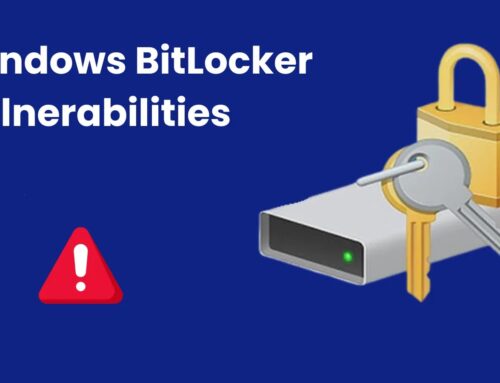
New Python-Based PXA Stealer Via Telegram Stolen 200,000 Unique Passwords and Hundreds of Credit Cards
The PXA Stealer: Unpacking a New Python-Based Telegram Threat
A disturbing new cybercriminal phenomenon has emerged, leveraging a sophisticated Python-based information stealer dubbed PXA Stealer. This multi-stage operation has already compromised over 4,000 unique victims, leading to the theft of an astonishing 200,000 unique passwords and hundreds of credit card details. This report dissects the PXA Stealer, its operational mechanics, and provides essential mitigation strategies for cybersecurity professionals and end-users alike.
Understanding the PXA Stealer Campaign
First surfacing in late 2023, the PXA Stealer has rapidly evolved into a highly evasive threat. Its Python-based foundation grants it inherent cross-platform potential, making it a versatile tool for malicious actors. The campaign’s success lies in its multi-stage delivery and execution, designed to bypass traditional security defenses and maintain persistence on compromised systems.
The attackers behind PXA Stealer have demonstrated a high degree of operational security and technical prowess. The use of Telegram as a command-and-control (C2) channel is particularly noteworthy, allowing for covert exfiltration of stolen data and real-time interaction with compromised machines. This approach leverages the widespread adoption and perceived trust of messaging platforms, making detection more challenging.
Key impact statistics include:
- 200,000+ unique passwords stolen: This represents a significant risk for credential stuffing attacks and account takeover across a vast array of online services.
- Hundreds of credit card details compromised: Direct financial impact and potential for widespread fraudulent transactions.
- Over 4,000 unique victims: Indicates a broad and successful targeting campaign, affecting individuals and potentially organizations.
Technical Modus Operandi of PXA Stealer
The PXA Stealer operates with a focus on stealth and data exfiltration. While specific technical indicators may vary, its Python-based nature suggests portability and ease of modification. Common information stealer functionalities likely include:
- Browser Data Theft: Targeting saved credentials, autofill data, cookies, and browsing history from popular web browsers (e.g., Chrome, Firefox, Edge).
- Cryptocurrency Wallet Exfiltration: Identifying and stealing seed phrases, private keys, or wallet files from various cryptocurrency applications.
- System Information Gathering: Collecting details about the victim’s operating system, hardware, installed software, and running processes.
- File Exfiltration: Searching for and stealing sensitive files based on predefined extensions or keywords (e.g., documents, images, financial records).
- Screenshot and Webcam Capture: Potentially capturing visual information from the victim’s screen or webcam.
- Telegram as C2: Utilizing the Telegram API or client for encrypted communication, delivering commands, and exfiltrating stolen data, often bypassing network security layers designed to detect traditional C2 channels.
The multi-stage aspect of the attack likely involves initial compromise vectors such as phishing attacks, malvertising, or bundled software, followed by the silent deployment and execution of the stealer payload.
Remediation Actions and Prevention Strategies
Given the pervasive nature of information stealers like PXA, a multi-layered security approach is essential for both prevention and mitigation. Proactive measures are critical to safeguard data and identity.
For Individuals:
- Enable Multi-Factor Authentication (MFA): Implement MFA on all critical online accounts (email, banking, social media, cloud services). This significantly reduces the impact of stolen passwords.
- Use a Password Manager: Store complex, unique passwords for every online service using a reputable password manager. Do not reuse passwords.
- Be Wary of Phishing: Exercise extreme caution with unsolicited emails, messages, or links. Verify sender identities and scrutinize URLs before clicking.
- Regular Software Updates: Keep operating systems, web browsers, and all installed applications updated to patch known vulnerabilities.
- Antivirus/Endpoint Protection: Utilize a reputable antivirus or endpoint detection and response (EDR) solution and ensure it’s kept up-to-date.
- Network Segmentation (Home Users): If possible, segregate IoT devices onto a separate network to limit potential lateral movement in case of compromise.
For Organizations:
- Employee Security Awareness Training: Conduct regular training on phishing, social engineering, and safe browsing practices.
- Strong Password Policies & MFA Enforcement: Mandate robust password policies and enforce MFA across the organization for all systems and applications.
- Endpoint Detection and Response (EDR) / Extended Detection and Response (XDR): Deploy advanced EDR/XDR solutions to detect anomalous behavior, suspicious process execution, and C2 communication.
- Network Traffic Monitoring: Implement solutions to monitor outbound network traffic for unusual patterns, especially connections to known malicious IPs or to services like Telegram if not business-sanctioned.
- Principle of Least Privilege: Grant users and applications only the minimum necessary permissions to perform their functions.
- Regular Vulnerability Management: Conduct routine vulnerability scans and patch critical vulnerabilities promptly.
- Incident Response Plan: Develop and regularly test a comprehensive incident response plan to quickly identify, contain, and remediate breaches.
- Data Loss Prevention (DLP): Implement DLP solutions to prevent sensitive data from leaving the organizational network without authorization.
Tools for Detection and Mitigation
| Tool Name | Purpose | Link |
|---|---|---|
| Endpoint Detection & Response (EDR) Solutions | Detects and responds to advanced threats, including malware and fileless attacks. | Varied (e.g., CrowdStrike, SentinelOne) |
| Network Intrusion Detection/Prevention Systems (IDS/IPS) | Monitors network traffic for suspicious activity and blocks known threats. | Varied (e.g., Snort, Suricata) |
| Security Information and Event Management (SIEM) | Aggregates and analyzes security logs from various sources for threat detection. | Varied (e.g., Splunk, IBM QRadar) |
| Cybersecurity Awareness Training Platforms | Educates employees on identifying and avoiding cyber threats. | Varied (e.g., KnowBe4, SANS) |
| Password Managers | Helps users create and manage strong, unique passwords. | Varied (e.g., LastPass, 1Password, Bitwarden) |
Conclusion
The PXA Stealer campaign underscores the evolving sophistication of cyber threats and the critical importance of a layered security defense. The theft of 200,000 unique passwords and hundreds of credit card details is a stark reminder of the financial and personal impact of successful data breaches. Organizations and individuals must prioritize robust security practices, including strong authentication, diligent patching, and continuous vigilance, to counter the persistent threat posed by information stealers operating through novel channels like Telegram.





